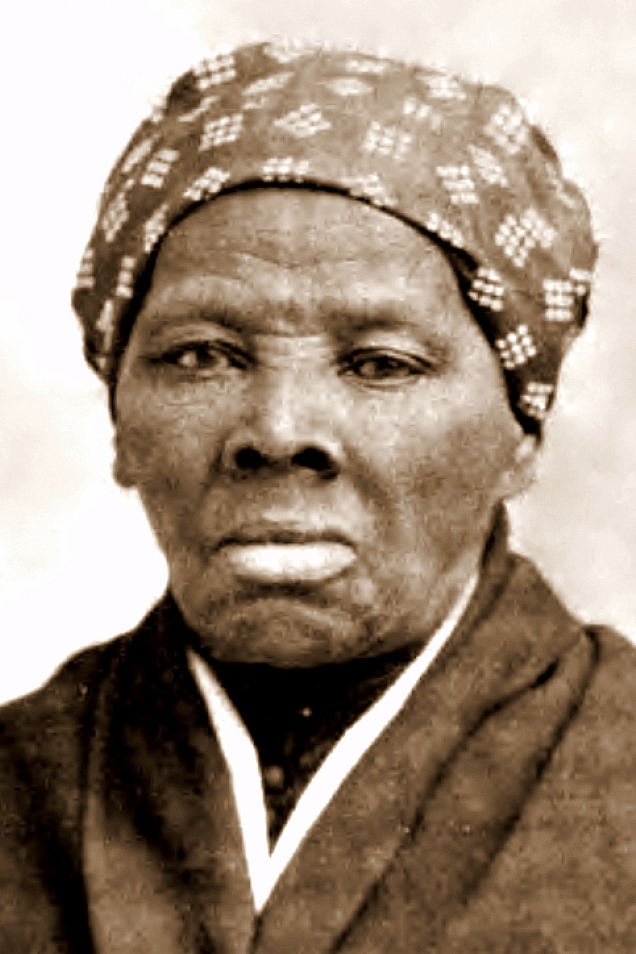
The Underground Railroad
Black History Month
In honor of Black History Month, the Bureau of Land Management is taking you on a tour of several safe houses along the Underground Railroad. The Underground Railroad was a network of secret routes and safe houses created to help enslaved African Americans reach freedom in northern states and Canada. Numerous safe houses along the Underground Railroad were built by those who received the title for their land directly from the United States government under various authorities, such as the Land Act of 1820 and the Bounty Land Act of 1855.
Harriet Tubman

One of the most notorious Underground Railroad "conductors" was Harriet Tubman. She was able to help nearly 70 enslaved people reach freedom in the North. To honor her efforts, the Biden Administration is resuming the Obama-era push to put Harriet Tubman’s image on the $20 bill. Jen Psaki, the White House press secretary said, “The Treasury Department is taking steps to resume efforts to put Harriet Tubman on the front of the new $20 notes. It’s important that our money reflect the history and diversity of our country.”
Underground Safe Houses
01 / 04
1
George B. Hitchcock House
Just west of the Lewis, Iowa city limits, abolitionist and minister George B. Hitchcock built this house around 1856 to help enslaved African Americans reach freedom. To learn more about the George B. Hitchcock House located in Cass County, Iowa, click here .
While George B. Hitchcock did not acquire the property that this safe house was on from the federal government, he did acquire numerous other parcels from the federal government in the same township between 1854 and 1861. Click here to view those patents.
2
Jordan House
The Jordan House was built by James Cunningham Jordan in the mid-1800s on land he purchased directly from the federal government in 1852! Click here to view the land patent.
Jordan was a staunch abolitionist, often referred to as the "Chief Conductor" of the Underground Railroad for Polk County, Iowa. He was born in Greenbrier County, West Virginia, where he began selling livestock and later became more involved in real estate and railroad development before moving to Iowa. In 1854, he was elected to the Iowa State Senate. To learn more about James Jordan and the Jordan House, click here .
3
Milton House
The Milton House, located in southern Wisconsin was another stop along the Underground Railroad. Joseph Goodrich purchased the land from the federal government in 1843. You can view his original patent here !
Goodrich was part of a group of Seventh Day Baptists who traveled from New York to Wisconsin to settle out west. Evidence of the Goodrich family's involvement in the Underground Railroad is substantiated by oral testimony, letters, and published biographical material. To learn more about Goodrich and the Milton House, click here .
4
Doctor Nathan Thomas House
The Doctor Nathan Thomas House, located in Schoolcraft, Michigan, was built in 1835 by one of the Underground Railroad's most active members, Dr. Nathan Thomas, to help slaves find freedom in Canada.
Dr. Thomas's wife, Pamela Brown Thomas, wrote memoirs full of information about their experience as part of the Underground Railroad. She estimated that they helped between 1,000 to 1,500 slaves escape to freedom between 1840 and 1860. To learn more about the Doctor Nathan Thomas House, click here .
While there are over 80 historical National Park Service sites for stops along the Underground Railroad, there was no complete list of stops along the way, no maps were published, no pamphlets, etc., so this is by no means a complete list of stops along the Underground Railroad. There was no headquarters, and those that participated generally worked in small independent groups to help maintain secrecy. These were secret meeting points, secret routes that changed often, and it was all communicated by word of mouth.
We encourage you to view other GLO Records of the Week that have been published in celebration of Black History Month.